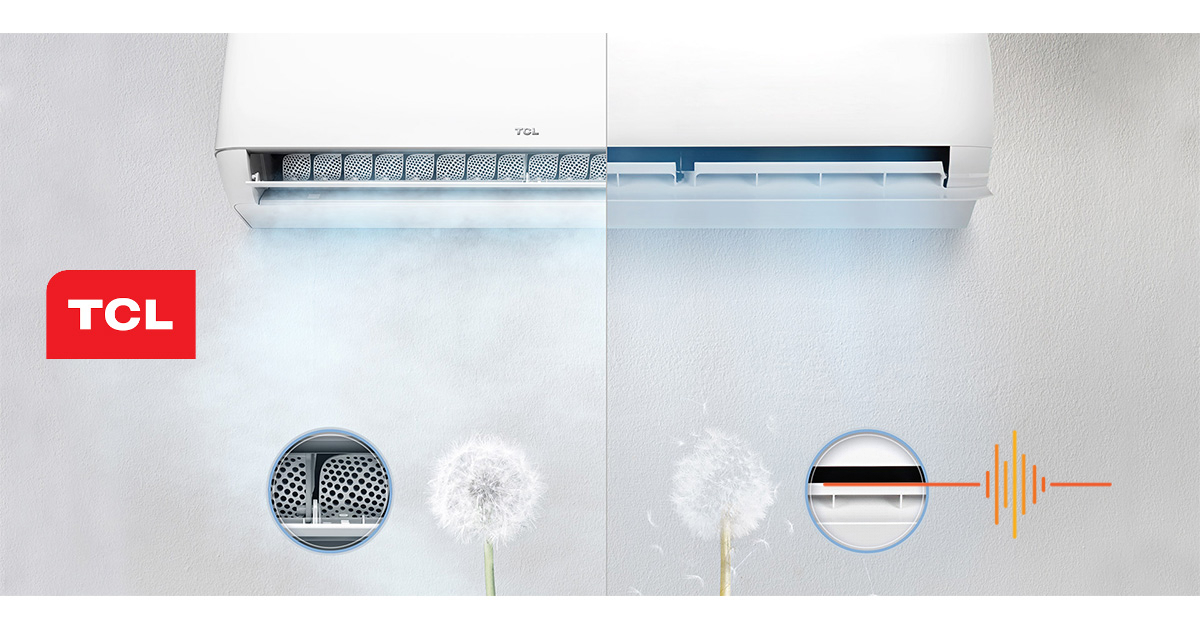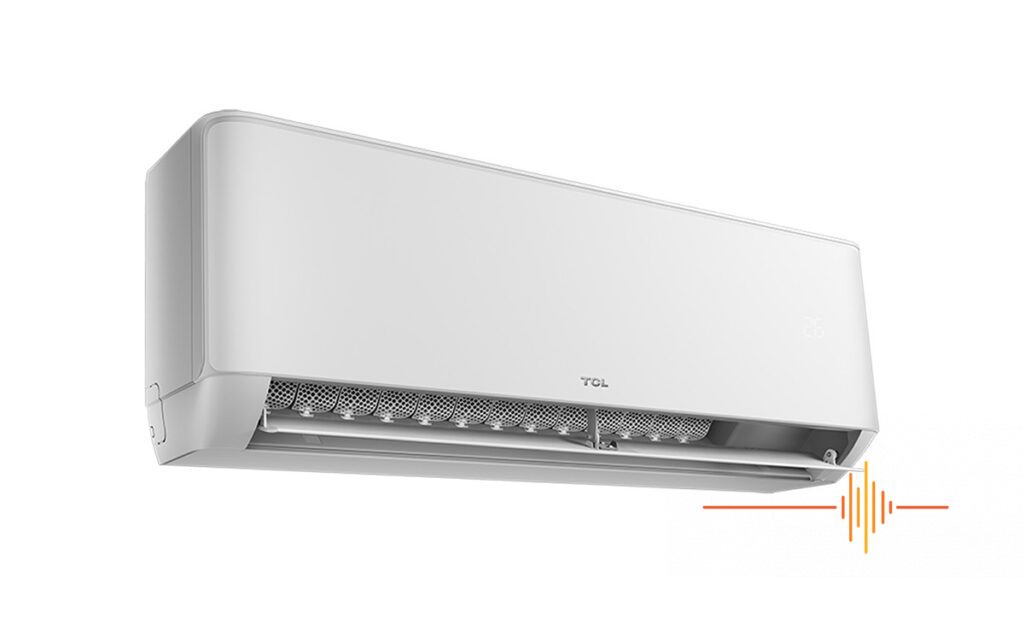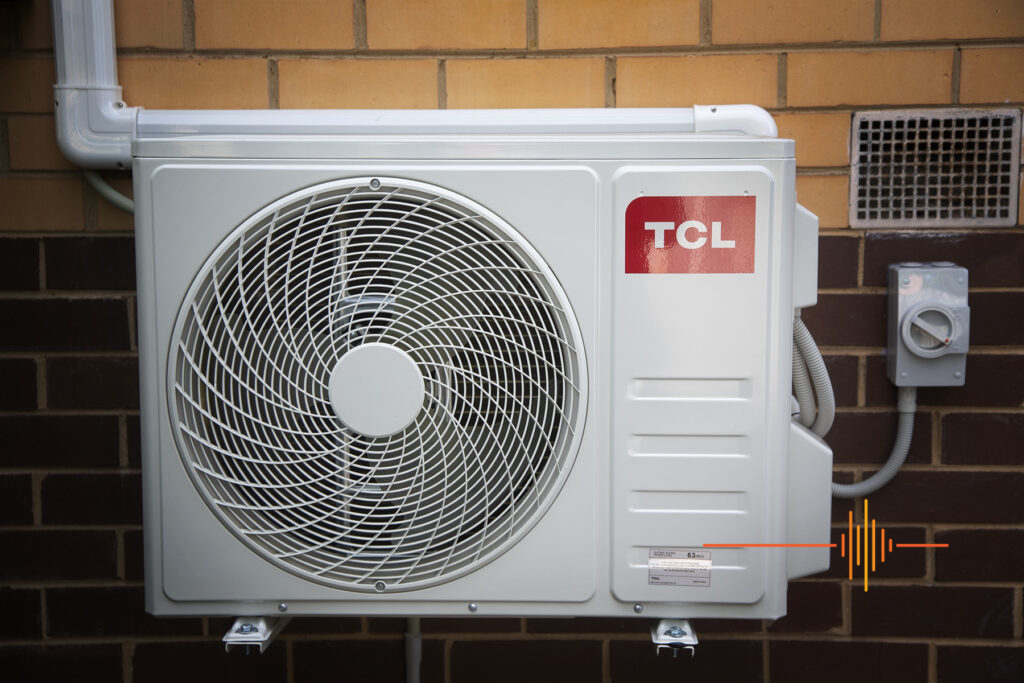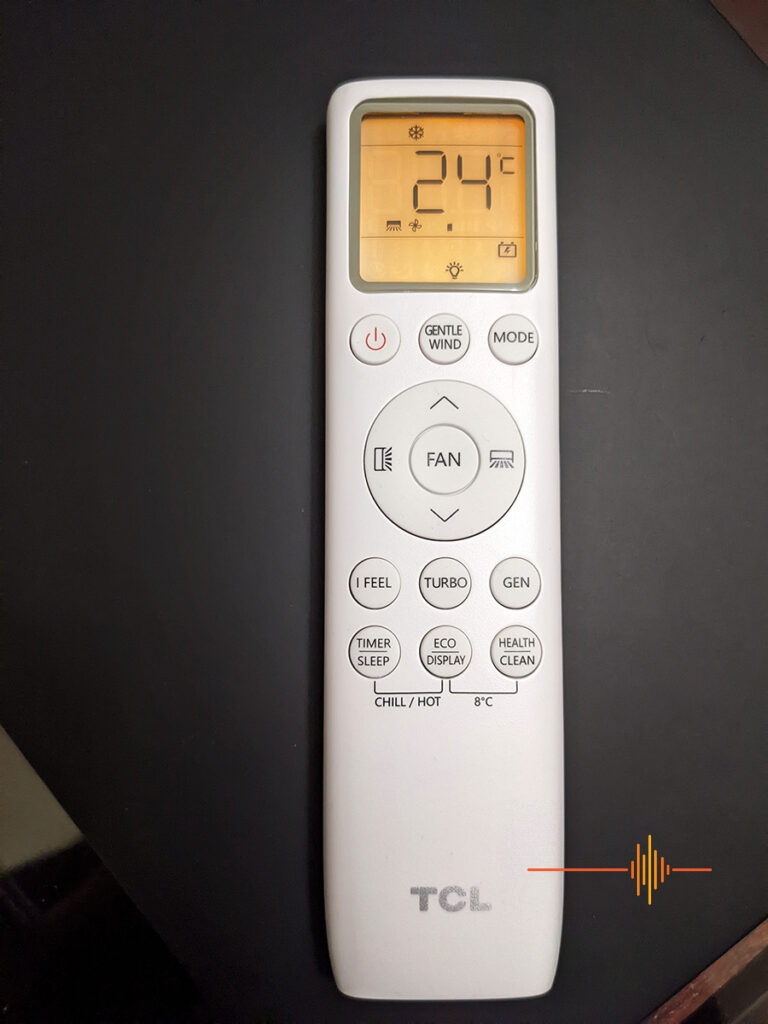The Australian summers evoke images of the beach, endless sweltering hot days, long days with sun setting well after 9pm. This summer though, we finally got a TCL T-Pro Series installed in our lounge room and it changed our lives.
Since we moved in our place two years ago, we have sweated through two summers and made do with fans and open doors at night to cool down the house. An air conditioner was on our list but with the pandemic and living in the great lockdown state, it was something that was bumped as a risk management exercise.
Sizing your unit
It is essential to size the unit properly so that it can do the job you want it to do. The risk of under sizing your unit will result in it working harder and still never get the outcome you are looking for.
Based on my calculations with the size of the room, I estimated a 3.5KW would be sufficient. The installer was quick to tell me that I should really have a 5.2KW at a minimum.
Prolife tip: don’t do what I did. It is always preferable to have your air conditioning needs assessed professionally. Also noting that an installer will run a dedicated power line back to the fuse box when you install a unit that is 5KW or higher.
Installation
I handballed the installation to the very capable guys at Leakes Electrical, who did the job with no fuss. They took all the appropriate precautions, drop sheets where there will be mess and dust, and also cleaned up after themselves.
Full disclosure, is this not a paid or gratis endorsement of the installers. They were not even told that I am doing a review on the unit until I declined their offer to run me through the remote control and how it all works.
First Impressions
I don’t need to go into the details of how a split unit air-conditioning works here, they have been around long enough.
There is the motor that goes on the outside. The inside unit is a gloss white unit, with just a small display set in the right side of the unit to indicate the temperature it is set to and to provide feedback as necessary.
My partner thought that the T-Pro was a little boxy looking, and it juts out of the wall by about 240mm at it’s deepest point. Honestly though we really did not pay much attention to it after the first night, the unit faded into the background and we are just grateful to have it available through the fortnight of hot weather here in Melbourne immediately after the unit went in.
The remote control comes with a screen to tell you what the unit is set to. It is simple enough to figure your way around it. And like most modern gadgets, it comes with an app – TCL Home.
App Configuration
The instruction manual gives the process for registering your T-Pro with the app.
It calls for putting the T-Pro into cooling mode, then press the Eco button six times (and get 6 confirmation beeps). After that the unit will beep twice and should display CF which means it is ready for pairing and registration. I found that my unit pretty much never display the CF denoted, but it does go into pairing mode.
Here is where I ran into some trouble with the final steps of registering the unit with the app. If you are running the latest standard on your home network – WPA3, WiFi 6, mesh or combined 2.4/5 GHz network, turn all those off. I had a long running headache where the app just refuses to find and/or register the unit. I put my mesh back to 2.4GHz only, turned off WiFi 6 and back into the legacy mode. I completely missed the bit where I am running WPA3 and that was the issue.
After I turned off WPA3, put the frequency to 2.4GHz and no WiFi6, the registration process pretty much completed straight away. Best of all, it stayed fully functional after all of that was turned back on.
Air is all around us
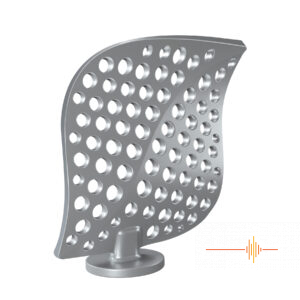 What makes the T-Pro different? The marketing speak talks about the Gentle Breeze function – “up to 1422 micro-holes perfectly spaced across the S-Shaped airflow vanes to create a soft laminar airflow.”
What makes the T-Pro different? The marketing speak talks about the Gentle Breeze function – “up to 1422 micro-holes perfectly spaced across the S-Shaped airflow vanes to create a soft laminar airflow.”
What is so special about that? Well referring back to the marketing, “this stops the traditional arctic jet stream being blasted into the room”. If you think to air-conditioning outlets in your car, this is how the traditional cooling works – pushing cold air through an outlet with the most rudimentary guidance to direct the air. Personally once the ambient temperature drops, I really feel the effects of direct cold air on my skin and it is very uncomfortable.
So what is laminar airflow then? Is it just a buzz word? Well actually no. Being a rocket scientist I just happen to understand laminar airflow really well. In flight, having a laminar boundary layer is like the holy grail of fluid dynamics. In layman’s term, laminar airflow is when an entire body of air within a designated space is moving uniformly in both velocity (speed) and direction. It is an energy efficient airflow with minimal drag.
The opposite of laminar is turbulent airflow, where the body of air is chaotic. Particles in the air is tossed around randomly with no control of directions. Think of a candle or incense, placed in front of a fan and try keep track of where individual smoke particles go. Or let go of an inflated balloon and try to predict it’s flight in the room.
In Use
Unashamedly we have been running the T-Pro most days for the past fortnight. The weather has been above 30 degrees Celsius outside and it was easily over 35 inside without cooling. There has been some very humid days as well just to up the ante on the discomfort.
Let’s answer the important question first, does it work? The answer is an unequivocal yes. We are so glad to have working air conditioning and it effortlessly cool our lounge and dining room. The cool breeze pushes through through the house and there is a noticeable difference with the ambient environment at a much more comfortable level.
Where it comes to the actual airflow, earlier I touched on how direct cold air on my skin is very uncomfortable to me. With the T-Pro running in normal mode, it acts just like any other air conditioner and I can definitely feel it. But when I put it in Gentle Breeze mode, the S-Shape vanes closes and the change in air flow is dramatic. I get all the cool air but lost the actual feel of the rush of air coming at me. Over a period of time running the T-Pro I was still getting the full climate control experience, but I did not have to move the louvres or sit somewhere else to avoid the direct cool air. Definitely a big tick for that experience.
In the video you can very clearly see how the movement of air changes from “excited” to gentle when I active the Gentle Breeze function.
Taking into account natural convection caused by density differences, cold air sinks and hot air rises. The T-Pro directs cool air upwards for a “shower-style” cool air curtain. Conversely warm air is blown downloads for a “blanket-style” air flow. The goal is to get air distributed more evenly for a more comfortable experience.
Controls
Before I could register the T-Pro via the app, I was stuck with the old school remote control. It gives you all the controls that is also available in the app. At a glance, the labels are not all that intuitive but doing a little RTFM does help.
Gentle Wind (marketed as Gentle Breeze), is available in cooling mode only, will closes the S-Shaped airflow vanes. This pushes the air through the micro-holes as show in the pictures in the review.
I Feel, enables the remote control to measure the temperature at it’s current location and tells the air conditioner to optimise the temperature for comfort. This gets automatically deactivated two hours later.
Turbo, as the name implies, operates either fast cooling or fast heating at the highest fan speed.
Sleep mode allows the unit to automatically adjust the temperature and fan speed to make the room more comfortable during the night. This setting once activated will remain so for 10 hours before reverting to previous setting mode.
Eco mode is for energy savings, and is available in both cooling and heating modes.
The T-Pro also has an air purifier function which claims to remove dirt, pollen and bacteria from the airflow. Rather topical right now and having your air filtered is a great feature regardless. The T-Pro comes with a self-clean function. It takes about 30 minutes and TCL does make a note to say it is normal to hear some noises as the plastic materials expand and contract. For people like me, it will send a cleaning reminder so you can wash the filter.
Additionally, this unit supports generator mode which is designed for unstable net power. There are 3 levels: L1 at 30% of rated current, L2 at 50% of rated current and L3 at 70% of rated current.
As pretty standard in any air conditioning units, there is a timer mode as well.
Other Features
As one would expect in this day and age, there is smart assistant integration. The TCL Home app will link with Google Assistant and Amazon Alexa.
Integrating into Google Assistant was a breeze, but I ran into some problems integrating into Amazon Alexa. I kept getting redirected to an unregistered website. I eventually added the TCL Home skill from the Alexa app, and although it still redirected me to an unregistered website, it did actually show up in my Alexa devices.
Once it’s in the ecosystem, you get to reap the benefits of voice controlling your air conditioner.
Last but not least, the T-Pro has the ability to self-diagnose for irregularities and provide feedback for maintenance and upkeep.
Gripes
From an aesthetics viewpoint, the T-Pro probably is not the best eye candy out there. But when you finally have air-conditioning after two years, and also suffered through that sweltering hot early January weather, it’s a case of don’t look a gifted horse in the mouth.
The remote control is not particularly intuitive to work out without reading the manual, and it is definitely a good thing to have the app so you can control everything from your fingertips.
And whilst I am on the topic of the user manual, from an impression management perspective, a spell checker will go a long way.
Conclusions
I note some minor gripes which did not negatively impact the T-Pro in my experience. Learning how to use the remote control is on par with anything new, it takes a little time to develop muscle memory.
What I am very happy with is the delivery of the gentle breeze promise. It works exactly as advertised and I really could feel the difference. There are features which I don’t need, such as the generator mode, but the idea is sound.
The T-Pro series is available from Appliances Online, Bi-Rite, Betta Home Living and Leading Appliances.
Pricing and availability
TCL T-Pro Series Reverse Cycle Air Conditioner
- 2.6KW RRP: $799
- 3.5KW RRP: $999
- 5.2KW RRP: $1299
- 7.2KW RRP: $1599
Specifications
Indoor/Outdoor Unit: TAC-18CHSD/TPG11IT
Operation Type: Reverse Cycle
Cooling Capacity: 5.2 KW
Heating Capacity: 5.2 KW
Rated Input Cooling: 1.4 KW
Rated Input Heating: 1.2 KW
Moisture Removal: 2 Litre/Hour
AEER: 3.68
ACOP: 4.29
Noise: Indoor 49 dB, Outdoor 62 dB
Dimensions: Indoor 1097 x 332 x 222mm, Outdoor 853 x 349 x 602mm (W x D x H)
Weight: Indoor 13.5 kg, Outdoor 34 kg


